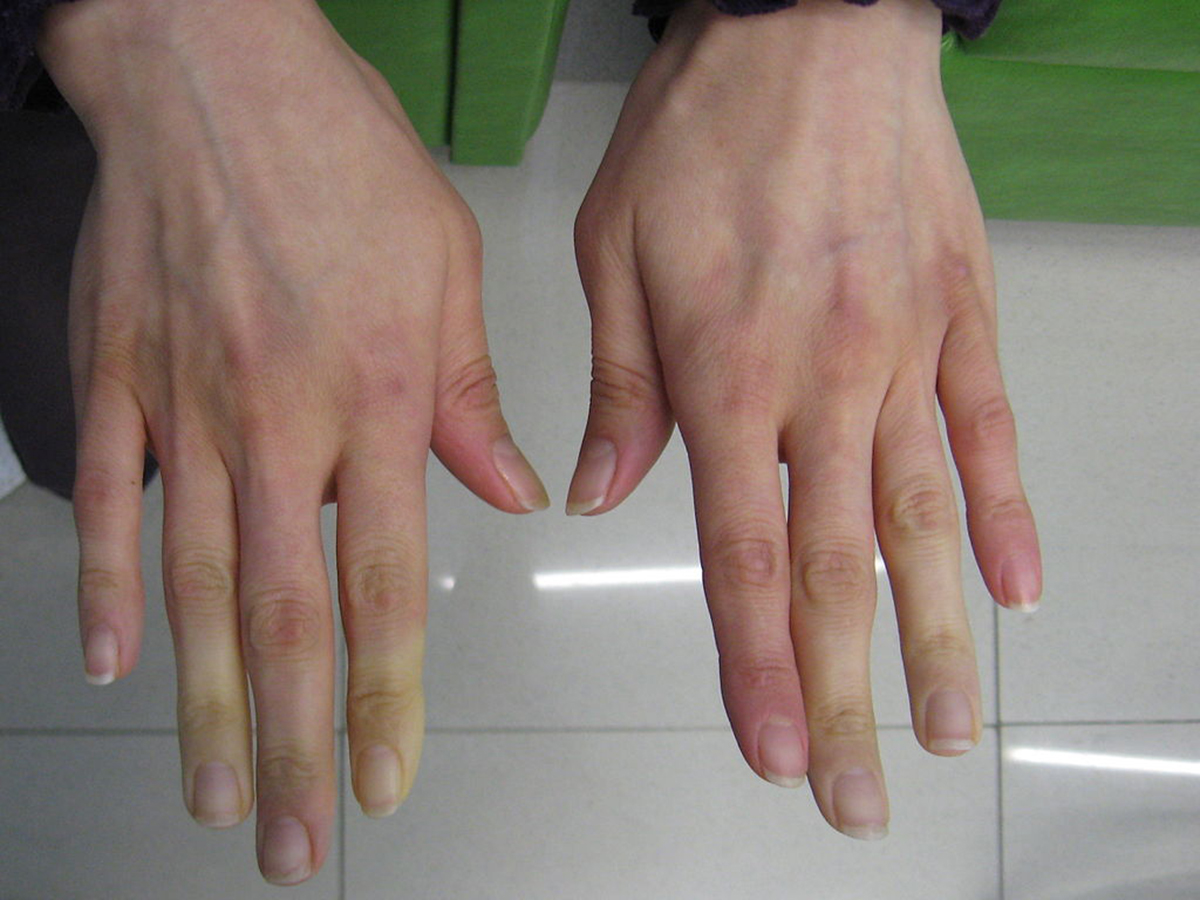Table of Contents
Raynaud's disease is a pretty rare disorder that affects only about 5 percent of the US population, which is around 17 million people. People with Raynaud's disease suffer from numb and cold fingers and toes. This is because the disorder affects the arteries and arterioles, which are the large and small vessels that carry oxygenated blood from the heart out to the body. Since your body isn't able to get blood to your hands and feet properly, they start turns white and feeling cold and numb.

Vasomotor controls are the body's way of narrowing or dilating the various blood vessels. With Raynaud's, the vessels constrict spasmodically, reducing the needed blood flow to the fingers and sometimes to the toes. People who suffer from Raynaud's disease experience "attacks" which typically affect their hands and toes, but sometimes also areas like the nose and ears.
What do you need to know about this rare disorder and how you might be able to treat it? Let's take a look.
The Two Types of Raynaud's
Raynaud's disease is properly referred to as primary Raynaud's. The cause is undetermined and the symptoms themselves are the entire problem. It's the more common and less severe type of Raynaud's. During an attack, a person initially feels their fingers go numb or the fingers may feel very cold. Then, their fingers begin to look quite patriotic. First, they turn white, then blue, and then red. During the white and blue phases, the blood flow is constricted. This is what causes the initial feelings of numbness and cold. During the red phase, blood flow returns to the area. Some people experience a throbbing sensation when this occurs. Sometimes, it's more like the prickly sensation you get when your foot "falls asleep."
However, sometimes, attacks just happens to one finger. While most people only experience the disease in their fingers, about 40 percent of those with Raynaud's also see symptoms in their toes. Although it's very rare, sometimes symptoms manifest on the nose, ears, nipples, and even lips.
The other main type of Raynaud's is called secondary Raynaud's. Many people also refer to it as Raynaud's phenomenon. Secondary Raynaud's has the same symptoms of primary Raynaud's, but secondary Raynaud's has an identified cause. Some diseases and conditions that may cause secondary Raynaud's are:
- Scleroderma - A condition in which the skin becomes tight, hard, and swollen.
- Systemic lupus erythematosus - An autoimmune inflammatory disease that is characterized by a red rash that spreads over the nose and cheeks, resembling a wolf snout.
- Nerve entrapment - This is the compression of a nerve or nerves resulting in nerve damage. A common type of this is carpal tunnel syndrome.
- Anorexia-bulimia - These are the well-known eating disorders that result in wide-ranging damage to the body.
Secondary Raynaud's can also be caused by hand or foot injuries, by some types of chemical exposure, and even by some blood pressure medications. Nicotine from tobacco products can increase your risk of developing Raynaud's also, as well as birth control pills.
Read More: Raynaud's phenomenon
Who is Likely to Develop Raynaud's?
Secondary Raynaud's is mostly seen in people over the age of 30 who have one of the diseases or conditions previously listed. It's also more likely to appear in people who perform repetitive actions with their hands, take any of the medicines discussed already, smoke, and live where it gets cold.
- Raynaud's disease. (2001). In Taber's Cyclopedic Medical Dictionary (p.1756, Edition 19). Philadelphia, PA: F. A. Davis Company.
- Photo courtesy of Intermedichbo by Wikimedia Commons : commons.wikimedia.org/wiki/File:Secondary_Raynaud's_in_Sj%C3%B6gren's_syndrome_2_.JPG
- Photo courtesy of Elizabeth K by Flickr : www.flickr.com/photos/elizabethk/8559908045/

